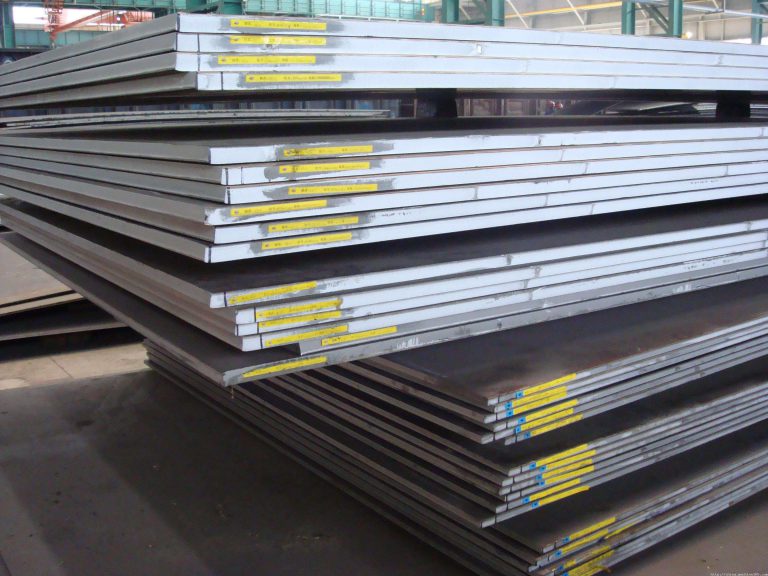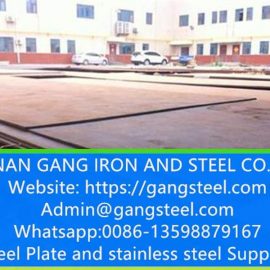asme sa 516 gr 70 density in kg/m3
SA516Gr.70 is widely used in petroleum, chemical, power station, boiler, and other industries used to make reactors, heat exchangers, separators, spherical tanks, gas tanks, liquefied gas tanks, nuclear reactor pressure shells, boiler drums, liquefied petroleum
Equipment and components such as gas cylinders, high-pressure water pipes of hydropower stations, and turbine volutes.
A516Gr70N meets the requirements of (ASME) ASTMA516/A516M standards, and fully meets the needs of oil gas with a high content of sulfur and hydrogen, reduces sulfur and hydrogen corrosion, reduces equipment maintenance, and increases equipment service life.
The steel plate has the following characteristics: good impact resistance, low-temperature deformation, good welding performance, good fatigue resistance, good anti-layer cracking performance, microalloying, high purity, low carbon equivalent, strong resistance to sulfur and hydrogen,
The products have good dimensional tolerances and surface quality.
We are ASME SA516 Gr.70 and ASME SA516GR.70 steel plate manufacturers,SA516GR.70 stocklist, SA516GR.70 cutting parts, SA 516 GR 70 machined parts supplier. Gangsteel exporter ASME SA516 Grade 70|ASME SA516GR.70 steel plate. SA516GR70 is a carbon pressure vessel steel grade. ASME SA516 GR.70 steel plates stock supplier.Keywords: ASME A516 Grade 70, ASME A516GR.70, ASME A516GR70, ASME A516 GR.70 SA516 Grade 70 steel is a carbon pressure vessel steel grade for moderate and lower temperature service.
SA516 Grade 70 usual request normalized if thickness above 40mm, if not, Gangsteel usual delivery in hot rolled or control rolled station. A516 Gr.70+N or A516gr70N mean that steel grade must be normalized in any thickness.

Copper, silver and brass may be both cooled slowly in air, or quickly by quenching in water. In this fashion, the steel is softened and prepared for further work similar to shaping, stamping, or forming. This part covers the minimal requirements for the design, supplies, fabrication, testing, inspection, operation, and upkeep of piping applications for steam, water, oil, gas, air, and different providers.
asme sa 516 gr 70 uts
Heat treatment
1.·SA515Gr60, SA515Gr70, SA516Gr60, SA516Gr70, SA516Gr60N, SA516Gr70N thickness ≤1.5in, (40mm) steel plate is usually supplied in rolled state, steel plate can also be ordered by normalizing or stress relief, or normalizing plus stress relief.
2. Thickness>1.5in.(40mm) steel plate should be normalized.
3. Unless otherwise specified by the buyer, the thickness ≤ 1.5in, (40mm) steel plate, when notch toughness is required, normalizing should be carried out.
4. If approved by the buyer, it is allowed to use a cooling rate greater than that in the air to improve toughness, but the steel plate only needs to be in the range of 1100-1300°F (595-705°C) subsequently
What is SA 106 Gr B material?
ASTM A106 Seamless Pressure Pipe (also known as ASME SA106 pipe) covers seamless carbon steel nominal wall pipe for high-temperature service. Suitable for bending, flanging and similar forming operations.
Power piping applications are present in electrical power generating stations, industrial and institutional plants, geothermal heating methods, and central and district heating and cooling methods. This part additionally covers exterior piping attached to an ASME Section I energy boiler. The difference between annealing and tempering comes down to how it’s treated.
- The details of the method depend upon the kind of metal and the exact alloy concerned.
- The material is then allowed to chill very slowly so that the equilibrium microstructure is obtained.
- This signifies that steels that are very hardenable (i.e. are inclined to type martensite under moderately low cooling charges) need to be furnace cooled.
- A full anneal sometimes results in the second most ductile state a metal can assume for metal alloy.
- In most circumstances this implies the fabric is allowed to furnace cool however in some instances it is air cooled.
- The cooling price of the steel needs to be sufficiently slow so as to not let the austenite remodel into bainite or martensite, but somewhat have it completely remodel to pearlite and ferrite or cementite.
The tensile strength of SA516Gr70 is 70 kilopounds per square inch, which is more than 482 as everyone usually says.
The main element content is C Mn Si, and the control of p and s determines its performance.
There are very few other trace elements.
Standard Specification for Carbon Steel Plates for Medium and Low-Temperature Pressure Vessels
SA516Gr70 Chemical detail
C≤0.30��Mn��0.79-1.30��P≤0.035��S��≤0.035��Si��0.13-0.45
SA516Gr70 Property Grade U.S (SI), Tensile strength ksi(MPa) 70 (485) and 70-90 (485-620)
This is as a result of when an object is quenched in water steam bubbles type on the surface of the item decreasing the floor area the water is in contact with. The salt within the brine reduces the formation of steam bubbles on the item’s floor, that means there’s a bigger floor space of the item in contact with the water, providing sooner cooling charges. Quench hardening is mostly applicable to some ferrous alloys, but not copper alloys. This part covers the minimal requirements for the design, supplies, components, fabrication, testing, inspection, operation, and upkeep of pipeline transportation methods. The part additionally covers the pipelines transporting slurries of nonhazardous supplies.
With data of the composition and section diagram, heat remedy can be used to regulate from tougher and extra brittle to softer and extra ductile. Quench hardening is a mechanical process in which steel and cast iron alloys are strengthened and hardened.
Quenching is the heating of steel to a temperature above the critical temperature of Ac3 or Ac1 (hyper-eutectoid steel sa516gr.70 steel supplier). Keep it for a period of time to make it all or half austenitized.
The temperature vary for process annealing ranges from 260 °C (500 °F) to 760 °C (1400 °F), depending on the alloy in query. The material is heated up to a temperature just below the decrease important temperature of metal. Cold-labored metal usually tends to own increased hardness and decreased ductility, making it troublesome to work. This is principally carried out on cold-rolled metal like wire-drawn metal, centrifugally cast ductile iron pipe and so on. In the case of ferrous metals, such as metal, annealing is carried out by heating the fabric for a while and then slowly letting it cool to room temperature in nonetheless air.

